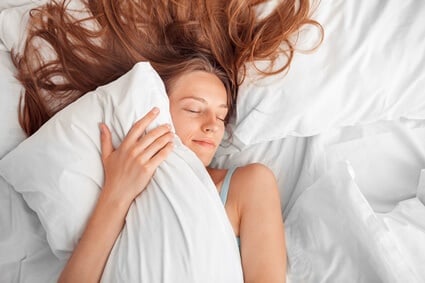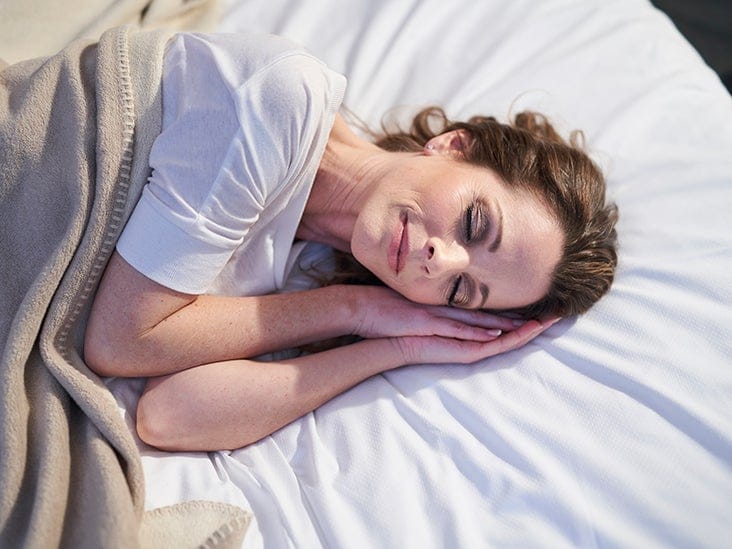How to Sleep Without Hugging a Pillow? Must-know facts!
In this article, you’ll discover some must-know facts about how to sleep without hugging a pillow. We’ll discuss the benefits of changing your sleep position, the potential drawbacks of hugging a pillow, and provide tips on how to wean yourself off this habit. By the end, you’ll have a better understanding of how to achieve a comfortable and restful sleep without relying on a pillow for support. So, let’s get started!

Importance of Sleep
We all know that getting a good night’s sleep is essential for our overall health and well-being. Sleep plays a crucial role in our daily functioning, including maintaining our physical health, mental clarity, and emotional balance. It is during sleep that our body repairs and rejuvenates itself, helping us wake up refreshed and ready to take on the day. However, not everyone is comfortable hugging a pillow while sleeping. If you’re one of those people, don’t worry – there are several alternatives and tips you can try to sleep without hugging a pillow.
Benefits of a Good Night’s Sleep
Before we delve into ways to sleep without hugging a pillow, let’s first understand why getting a good night’s sleep is so important. Sleep deprivation can lead to various health issues, both physical and mental. On the other hand, a restful sleep provides numerous benefits, including improved memory, enhanced creativity, increased productivity, and a strengthened immune system. Additionally, good sleep has a positive impact on our mood, helping to reduce stress, anxiety, and depressive symptoms.

Effects of Poor Sleep
If you’re not getting enough sleep or experiencing poor quality sleep, it can have detrimental effects on your health. Lack of sleep can impair cognitive function, making it difficult to concentrate, solve problems, and make decisions. It can also negatively affect your emotional well-being, leading to irritability, mood swings, and a decreased ability to manage stress. In the long term, chronic sleep deprivation can increase the risk of developing chronic conditions such as obesity, diabetes, heart disease, and even certain types of cancer.
Why Do People Hug Pillows While Sleeping?
Now that we understand the importance of sleep, let’s explore why some people find comfort in hugging a pillow while sleeping. There are several reasons why people may choose to hug a pillow at night:
Comfort and Security
Hugging a pillow provides a sense of comfort and security. It can mimic the feeling of being held or cuddled, which can be particularly comforting for those who sleep alone or feel vulnerable while sleeping.
Better Sleep Posture
Hugging a pillow can also help promote better sleep posture. It can provide support to the neck and spine, ensuring proper alignment and reducing the risk of waking up with a stiff neck or back pain.
Relieving Stress and Anxiety
Hugging a pillow can be a form of self-soothing, especially for individuals who experience high levels of stress or anxiety. The pressure applied by the pillow against the body can create a calming effect, helping to alleviate feelings of anxiety and promote relaxation.

Alternatives to Hugging a Pillow While Sleeping
If you find that hugging a pillow doesn’t suit your sleep preferences or you simply want to explore alternatives, here are a few options to consider:
Body Pillows
Body pillows are long, narrow pillows that provide support to the entire body. They can be a great alternative to hugging a regular pillow, as they offer support to different areas such as the neck, shoulders, back, and legs. Body pillows come in various shapes and sizes, allowing you to find the perfect fit for your body type and sleeping position.
Weighted Blankets
Weighted blankets have gained popularity for their ability to provide deep pressure stimulation, which can have a calming effect on the body and promote better sleep. These blankets are filled with evenly distributed weights, applying gentle pressure to the body. The weight of the blanket can mimic the feeling of being hugged, making it an excellent alternative for those who find comfort in hugging a pillow.
Cuddling with a Partner
If you have a partner who is open to it, cuddling with them while sleeping can be a great substitute for hugging a pillow. Physical touch releases oxytocin, a hormone that promotes feelings of relaxation and bonding. Cuddling can provide a sense of comfort and security, making it easier to fall asleep and stay asleep throughout the night.
Using a Supportive Mattress or Bedding
Investing in a supportive mattress and bedding can also help you sleep comfortably without hugging a pillow. A supportive mattress will provide proper alignment for your spine, while high-quality bedding will offer the right level of cushioning and support for your body. Experiment with different mattress firmness levels and bedding materials to find what works best for you.
Tips for Sleeping Without a Pillow
If you prefer to sleep without any type of support or want to transition away from hugging a pillow, here are some tips to help you sleep comfortably:
Practice Correct Sleeping Posture
Sleeping in the correct posture can help alleviate tension in the body and promote better sleep quality. Try sleeping on your back with a flat pillow or no pillow at all. This position allows for proper alignment of the spine. If you find it challenging to sleep on your back, sleeping on your side with a body pillow between your knees can also provide support and alignment.
Use a Neck Support Pillow
If you’re used to hugging a pillow for neck support, consider switching to a neck support pillow designed specifically for this purpose. Neck support pillows are designed to cradle the neck and provide optimal support, helping maintain a neutral spine alignment.
Try Different Sleeping Positions
Experiment with different sleeping positions to find the one that feels most comfortable for you. Everyone is different, so what works for someone else may not work for you. Some people find sleeping on their stomach without a pillow or sleeping in a half-fetal position on their side most comfortable.
Upgrade Your Bedding and Mattress
Investing in high-quality bedding and a comfortable mattress can make a significant difference in your sleep quality. Opt for breathable materials such as cotton or bamboo for your sheets and pillowcases, ensuring optimal temperature regulation during the night. A supportive mattress can provide the right level of comfort and support for your body, helping you sleep without the need for a pillow.

Exercises and Stretches to Help Sleep
Engaging in gentle exercises and stretches before bed can help relax your body and prepare it for a good night’s sleep. Here are a few exercises and stretches that can promote better sleep:
Neck and Shoulder Stretches
Gently roll your head from side to side, stretching the neck muscles. You can also lift your shoulders up towards your ears and then roll them back and down, releasing tension in the shoulders.
Stretching Before Bed
Incorporate gentle stretching exercises into your bedtime routine. Focus on stretching your hamstrings, calves, and hips to release any tension in these areas.
Yoga Poses for Better Sleep
Certain yoga poses, such as Child’s Pose, Legs-Up-The-Wall, and Reclining Bound Angle Pose, can help calm the mind and relax the body before sleep. These poses promote deep breathing and relaxation, which can enhance your sleep quality.
Creating a Relaxing Sleep Environment
Creating a relaxing sleep environment is essential for quality sleep. Here are a few tips to cultivate a soothing atmosphere in your bedroom:
Eliminate Distractions
Remove any distractions from your bedroom, such as electronics, bright lights, or clutter. Create a space that is solely dedicated to sleep and relaxation.
Set the Right Temperature
Ensure that your bedroom is at a comfortable temperature for sleep. The ideal temperature for most people is between 60 and 67 degrees Fahrenheit (15 to 19 degrees Celsius). Experiment with different temperatures to find what works best for you.
Use Aromatherapy
Incorporate relaxing scents into your sleep routine. Lavender, chamomile, and jasmine are known for their calming properties and can promote a sense of serenity before bed. Use essential oils, sachets, or scented candles to infuse the air with these soothing scents.
Block Out External Noise
If external noise disturbs your sleep, consider using earplugs or a white noise machine to mask or block out sounds that could disrupt your sleep.

Establishing a Bedtime Routine
Establishing a bedtime routine can signal to your body that it’s time to wind down and prepare for sleep. Here are some tips to create a relaxing pre-sleep routine:
Unwind Before Bed
Engage in relaxing activities before bed that can help you unwind, such as reading a book, taking a warm bath, practicing deep breathing exercises, or listening to calming music. Find what relaxes you and make it part of your nightly routine.
Avoid Electronics
The blue light emitted by electronic devices can interfere with your sleep schedule by suppressing the release of melatonin, a hormone that regulates sleep. Avoid using electronic devices, such as smartphones, tablets, or laptops, at least an hour before bedtime.
Create a Relaxing Ritual
Develop a bedtime ritual that promotes relaxation and signals to your body that it’s time to sleep. This could include things like sipping a cup of herbal tea, doing a short meditation, or writing in a journal. Consistency is key, so try to follow your routine every night to create a sense of familiarity and relaxation.
Managing Stress and Anxiety
Stress and anxiety can significantly impact your ability to fall asleep and stay asleep. Here are a few strategies to help manage stress and anxiety before bed:
Practice Meditation or Mindfulness
Engaging in meditation or mindfulness exercises before bed can help calm the mind and relax the body. These practices focus on staying present in the moment and cultivating a sense of calmness. Experiment with different techniques to find what works best for you.
Seek Professional Help if Needed
If stress and anxiety significantly impact your sleep or overall well-being, consider seeking help from a mental health professional. They can provide guidance and support, helping you develop coping strategies and techniques to manage stress and anxiety effectively.
Seeking Medical Advice
While most sleep issues can be addressed with simple changes and healthy sleep habits, some individuals may require medical intervention. If you have persistent or severe difficulty sleeping, it is advisable to consult a doctor. They can assess your situation, identify any underlying sleep disorders, and provide appropriate treatment options.
Consulting a Doctor
If your sleep problems persist despite implementing healthy sleep habits, consult a doctor who specializes in sleep medicine. They can evaluate your symptoms, conduct sleep studies if necessary, and provide a diagnosis and treatment plan tailored to your specific needs.
Understanding Sleep Disorders
Sleep disorders such as insomnia, sleep apnea, restless leg syndrome, and narcolepsy can significantly disrupt sleep and impact your overall well-being. These conditions often require medical intervention, and a sleep specialist can help diagnose and treat these disorders effectively.
Conclusion
While hugging a pillow can provide comfort and promote better sleep posture, there are various alternatives and tips you can try if hugging a pillow doesn’t suit your sleep preferences. Experiment with different bedding options, sleeping positions, and relaxation techniques to find what works best for you. Remember, everyone is unique, and what works for one person may not work for another. By prioritizing quality sleep and implementing healthy sleep habits, you can achieve restful nights without the need to hug a pillow. Good sleep is essential for your overall well-being, so make sure to give it the attention it deserves. Sleep tight!
FAQs
Why do I hug my pillow when I sleep?
Hugging a pillow provides comfort and a sense of security. It can mimic being held, especially for those who sleep alone or feel vulnerable at night.
Why can’t I go to sleep without hugging my pillow?
Hugging a pillow may have become a comforting bedtime habit, signaling your body it’s time to rest. It can alleviate feelings of loneliness and anxiety.
Is hugging a pillow healthy?
Hugging a pillow can promote better sleep posture and provide comfort. Whether it’s healthy depends on individual preferences and sleep needs.
